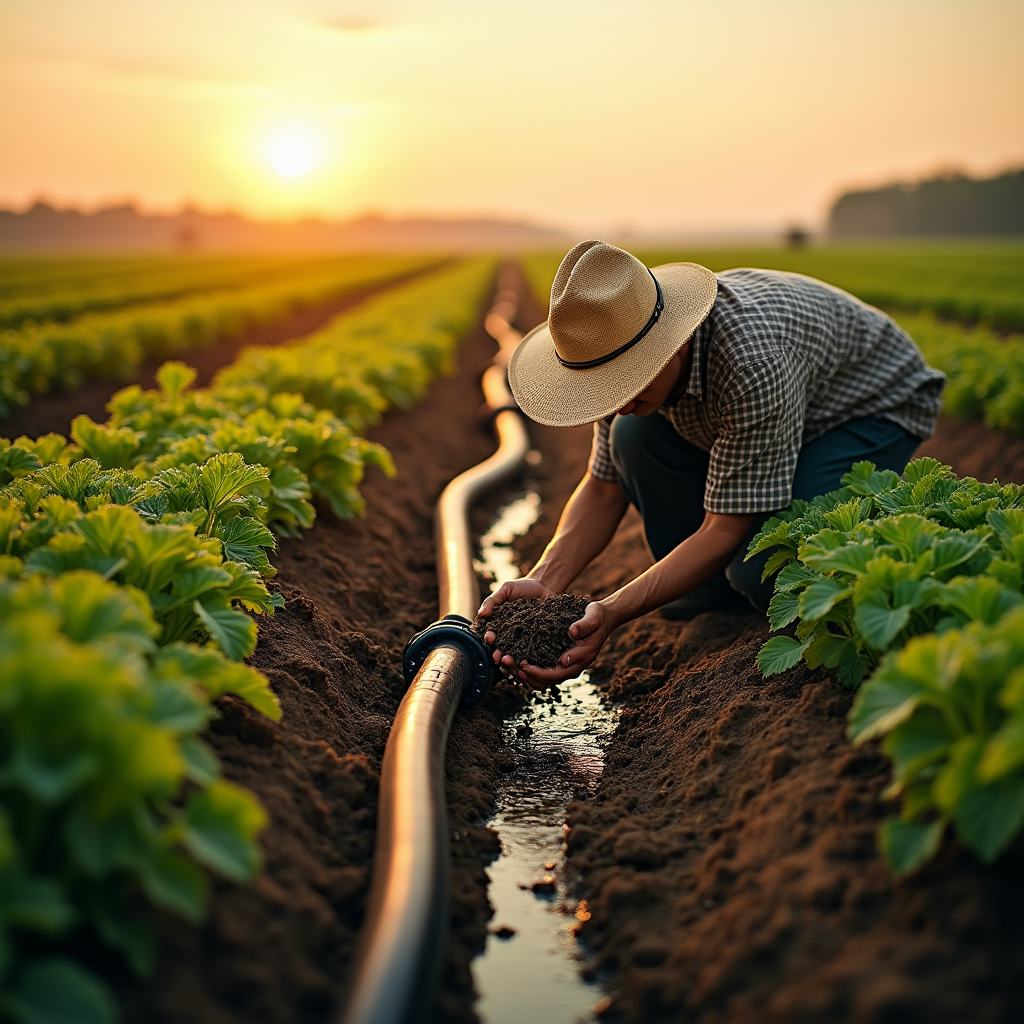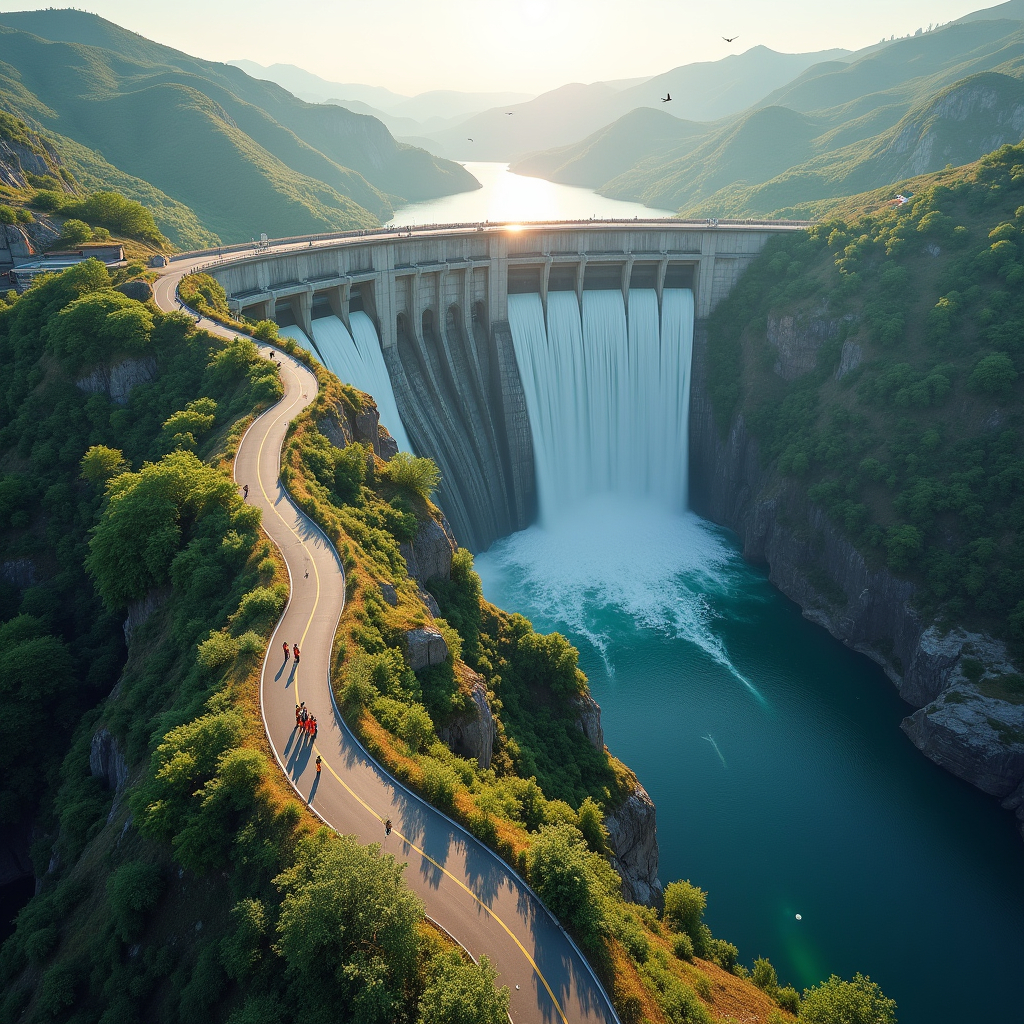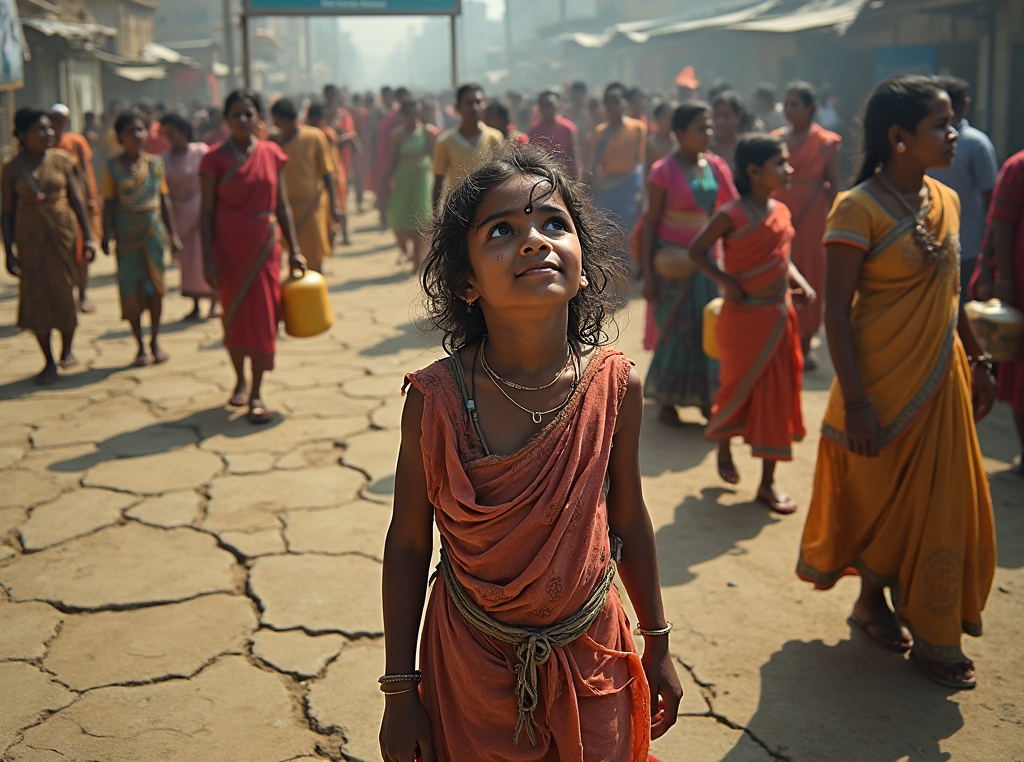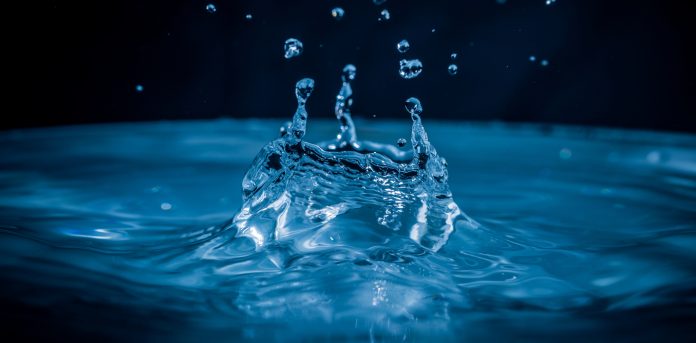This article was written by Rajeev Kumar, pursuing a Diploma in Content Marketing and Strategy Course from Skill Arbitrage, and edited by Koushik Chittella.
Table of Contents
Introduction
Water conservation is our preparedness to meet the future demands of water by managing our fresh water resources in a very sustainable manner and protecting the hydrosphere. Based upon the availability of fresh water, every country has its own needs, practices, strategies, and policies regarding its use. There are very few countries in the world that are rich in freshwater resources and have low populations, so they have less concern for water conservation. Some countries in the world have limited resources of water, but due to their well-educated and low population, they can responsibly use water. But simultaneously, there are so many other countries like India that have huge demand for water with a very large and uneducated population with shrinking water resources and need much more plans and practices to conserve the water. These water conservation efforts may include planning and implementation by the government to educate the public regarding water through awareness programs, enforcement rewards, and punishment methods in its way of use and waste.
Water conservation: meaning
In simple language, the practice of saving water for future use is known as water conservation. Scientifically, water conservation is a practice that aims to manage the available water resources in a sustainable manner to manage freshwater resources by fulfilling human needs.
Water resources
All those bodies contain some amount of water on earth, and it is primarily categorised as salt water and fresh water resources.
- Salt water: This form of water is saline, brackish, or salty in nature. It is rich in minerals and many other contaminants, and it is stuck in oceans, accounting for 97% of the total water on Earth.
- Freshwater: This form of water also contains minerals., but to a very lesser extent, and is accessed by all life forms on earth to survive. It is hardly three percent of the total water on Earth. This water is found as ice on glaciers, water in rivers, ponds, pools, or groundwater, and as vapours in clouds.
Need for water conservation
As we know, water is essential for life. Every living organism needs water to survive. We need a good amount of freshwater to live a quality lifestyle. Humans also need water for various purposes, such as irrigation of crops, power generation, cooking, washing, cleaning, industrial use, etc. Water conservation is going to be an essential practice in every part of the world, even in water-sufficient regions. It is nature that replenishes different water resources through a constant hydrological cycle. The very first reason is that the increasing human population and its demands and interference with the environment have led to disturbance in nature’s hydrological cycle, resulting in drought and flood-like situations, which have been evident for the last few years. The second answer is that we are depleting water resources much faster than they are being replenished by natural processes.
Strategies for water conservation
The easiest and most practical approach to water conservation is to reduce our water usage. This can be achieved through judicious water use practices or by adopting best practices in different domains of life.
In domestic use
- While washing hands, rinsing the mouth, brushing, etc., keep the tap at the lowest pace, reducing water waste.
- Wash fruits and vegetables by soaking them in a container rather than in running water from a tap, as this practice may benefit you in two ways: one is by reducing water loss, and the other is excessive insecticides will be washed off.
- Use flushes with a vacuum cistern so as to flush the least required quantity of water in the toilet.
- Use the washing machines and dishwashers when they have been loaded up to full capacity; this will save thousands of gallons of water.
- Check for leaks at joints of pipes indoors as well as outdoor fittings.
- Keep the taps closed when not in use.
- Don’t discharge sewage water untreated or treated into natural water resources; it may contaminate them. Water contamination may lead to diseases like diarrhoea and many other public health issues.

In gardening use
- In your kitchen garden, spread a compost layer on the topmost of the soil, as it will slow down the evaporation process and maintain the humidity.
- Reuse water from indoor sources such as the kitchen and bathrooms as tertiary water; do not let it flow into the drains as waste.
- Use drip systems and sprinklers to water the plants and lawn, and don’t let the water flow as an open jet does.
In agricultural use
- Reducing evaporation water loss from the soil surface by adopting some effective practices.
- Do the irrigation work morning or evening hours so as to minimise the water loss through evaporation.
- Use a green net to protect the vegetables from sunlight.
- Sow crops in a scientific way and take help of research centres for soil testing, seed selection, and pesticide selection, keeping in view of the available natural resources, especially water.
- Avoid showing main crops such as rice, maize, wheat, sugarcane, etc., in water scarce areas because they need an excessive amount of water to get a good yield.
- Adopt need-based crop farming so that the load on natural resources, especially water, is balanced. Because all the farmers sowing the same crop at the same time over exploits the resources to imbalance.
- Adopt a mixed cropping system.
- Go for seasonal crops in place of growing off-season varieties, which require more water.
- The water runoff losses can be reduced by adopting contour cultivation and terrace farming in hilly areas.
- Minimise the field water runoff to rivers as it contains fertilisers and pesticides, which may contaminate them, increasing the biological oxygen demand (BOD) of the watersource and leading to eutrophication.
In industry use
The human population is increasing day by day; everyone expects to have quality of life, along with the need for equipment and commodities, which need substantial amounts of water.
- Set up industrial plants in rural areas so that wastewater is used in agriculture after treatment.
- Don’t discharge industry-untreated or treated water to natural water resources.
- Use alternative coolant options wherever possible.
- Keep the water tanks covered to avoid evaporation and contamination. Water contamination with lead, arsenic, cadmium, and mercury may lead to various chronic diseases like cancer, renal dysfunction, osteoporosis, etc.
- Adopt eco-friendly water purification techniques instead of harmful chemicals or draining waste water into rivers.
Methods of water conservation
- Dams: Through extensive surveys, the government constructs small and large dams to conserve the flowing and flood water for need-based use, which serves to meet requirements like irrigation, power generation, drinking supplies, fishing, land holding, preventing floods, etc. Although there are hundreds of dams in our country, here we can take examples of some larger dams, which are around fifty in number, namely Tehri Dam, Bhakra Dam, Ranjit Sagar, Pong Dam, etc., which have become lifelines for India. One main and common component among all the dams is water conserved in them for multiple uses. If we did not have these water reservoirs, then how would we be able to meet our needs and survive? All these dams were planned more than two, three, or many decades ago, so we are meeting our needs.
- Rainwater harvesting through the conventional method: From ancient times, we have invented many ways to recharge the aquifers, including digging pits, trenches, wells, ponds, etc., but in recent years, we have developed various scientific mechanisms to store rainwater.
- Artificial method of groundwater recharge: It is the capturing of rainwater runoff from some specific places so as to make it enter the earth through a drilled pore. As we all know, in most of the urban places, there are concrete jungles of buildings, pucca roads, cemented footpaths, and well-concreted courtyards, leaving a very limited space for water absorption into the earth’s layers. Rainwater harvesting may be done by capturing water from rooftops, parks, local streams, or watershed arrangements. This stored water may be stored for direct use by keeping in tanks or can be recharged into the groundwater.
- Watershed management through check dams: The surface runoff collects and flows out to a larger river when managed to stop by some sustainable structural hindrance known as watershed management. It replenishes aquifers, maintains moisture in the soil, increases crop yield, reduces irrigation cost, prevents soil erosion, and increases green cover in that area.

- Rational use of groundwater: Though there is an abundance of water on earth, only a very small portion is suitable for use as fresh water. Given the limited amount of freshwater available to meet the demands of an increasing population, we need to use it rationally.
- Renovation of traditional water sources: Our forefathers felt the need to conserve water, so they developed various indigenous water conservation methods to hold rainwater runoff, including wells, step wells, ponds, and check dams.
- Practising scientific irrigation: Currently we are living in a very crucial era on earth because this era is dominated by human beings. Human needs are not limited to food and shelter alone, unlike other animals. Its secondary needs lead to overexploitation of natural resources and pollution. Keeping in view the huge demand for water, it needs to be managed scientifically, especially for irrigation. Because it is irrigation, which consumes 90 percent of the groundwater extracted from the earth. These scientific practices include drip systems, sprinklers, underground tube channels, etc.
- Tree plantation to enrich aquifers and improve their water quality: Trees are central in holding the soil and retaining water by reducing runoff through their roots. The root systems of trees collectively prevent soil erosion and recharge groundwater. They also improve water quality by trapping and absorbing minerals from sediment through their roots.
- Stop discharging effluents (pollutants) in water bodies: While making a channel to refill or recharge the underground aquifers, measures should be taken into account to avoid the underground water table pollution.
Social and scientific practices
- Community Education: It is the most important aspect of the water conservation program. Different stakeholders, such as the government, policymakers, land managers, farmers, teachers, students, the general public, etc., are educated regarding the use of water. This education may lead to the formation of the right management plan for further action.
- Water audit: This audit also needs to be practiced in a regular manner, as water consumption from various sources is directly or indirectly related to public health. Water samples for quality checks, analysing different parameters like pH, turbidity, TDS, etc., are collected from taps, borewells, handpumps, ponds, pools, rivers, rivulets, and streams from where we get water for our use.
- Organising awareness programs (competitions and rallies) for the public: Various measures are being adopted by the government at the district and state level to sensitise the public through mass awareness programs in the form of trainings, rallies, seminars, workshops, trade fares, school competitions, and exhibitions.
- Aquifer performance test: We have a need for aquifer testing to know its potential so as to put a load on it. There are three methods in aquifer testing, namely pumping tests, constant head tests, and slug tests; these are used to estimate hydraulic properties as well as aquifer boundaries of an aquifer system.
Policies & Grants
- For the last few years, the Ministry of Agriculture and state governments have been providing subsidies to construct rainwater harvesting tanks, bore wells, shallow tube wells, water harvesting systems for individuals and communities, the lining of tanks, restoration of tanks, water lifting devices, pump sets, etc., to the public.
- Since water is a state subject, the central government supplements its efforts through technical and financial support.
- Pradhan Mantri Krishi Sinchai Yojana (PMKSY) has been the government initiative since 2015-16 with the aim of accessing water to cultivable areas with assured irrigation with sustainable water conservation practices.
- The Central Ground Water Board, in consultation with states, has prepared a master plan including the estimated cost of artificial recharge to groundwater in 2020, indicating need-based structures for different terrain conditions of the country.
- The Ministry of Jal Shakti has implemented Jal Shakti Abhiyan on an annual basis since 2019, with different themes every year. The Jal Shakti Abhiyan: Catch the Rain-2023 Abhiyan campaign is an awareness program launched by the Ministry of Jal Shakti for water conservation.
- Atal Bhujal Yojana (ATAL JAL) was launched in 2019 with the aim to improve the management of groundwater through rainwater harvesting and community participation in some states, viz. Gujarat, Haryana, Karnataka, Madhya Pradesh, Maharashtra, Rajasthan, and Uttar Pradesh.
- The Mahatma Gandhi National Rural Employment Guarantee Scheme (MNREGS) includes water conservation and rainwater harvesting in its activity module.
- The Ministry of Housing & Urban Affairs has guidelines for the States to adopt measures suitable to local conditions, including the application of model building byelaws, development plans, and guidelines with an adequate focus on rainwater harvesting and water conservation measures.
- The Government of India, with its 15th Finance Commission, has released grants to states to be utilised through rural local bodies that can, inter alia, be utilised for rainwater harvesting.

Conclusion
It is the reality that with the current trend of requirement load on freshwater resources, we are very fast heading towards a water scarce world. Fresh water is a very common need for all living organisms, including plants and animals; it needs sustainable practices so that every single species of living organism, i.e., plants, animals, including humans, irrespective of financial health, caste, communities, and gender, can get a sufficient amount of water for its survival. Increased anthropogenic activity has led to water scarcity, availability, affordability, and contamination for different stakeholders on earth. In past decades, larger dams were constructed to reserve the flood and river water for further use, but now there is very little scope for constructing such large dams in the country due to a shortage of land, and it has had multiple issues like displacement and rehabilitation of native communities. We have to look for micro-level and behavioural practices to conserve water on Earth.
References
- https://www.slideshare.net/slideshow/water-conservation-250740467/250740467#2
- https://www.slideshare.net/slideshow/water-conservation-ppt/21366088
- https://www.idconline.com/technical_references/pdfs/civil_engineering/Water_conservation.pdf
- https://www.slideshare.net/slideshow/water-pollution-due-to-heavy-metals-pesticides-62127765/62127765
- http://gcrjy.ac.in/pdf/WATER_CONSERVATION_final.pdf
- https://www.researchgate.net/publication/332320727_Water_Conservation_Practices
- https://www.wvca.us/wvwrc/pdf/Uploads/Water%20Conservation%20Ideas.pdf
- https://www.rainyfilters.com/about-us/blogs/rain-water-harvesting-in-india
- https://www.sciencedirect.com/topics/earth-and-planetary-sciences/watershed-management
- https://www.undp.org/sites/g/files/zskgke326/files/migration/ge/undp_ge_ee_kura-2_IX-XI_Rational-Water-Use_eng.pdf
- https://pib.gov.in/PressReleasePage.aspx?PRID=1742819
- http://www.aqtesolv.com/aquifer-tests/aquifer-tests.htm
- https://pib.gov.in/PressReleaseIframePage.aspx?PRID=1987826
- https://rkvy.nic.in/static/schemes/WaterHarvestingIrrigation.html
 Serato DJ Crack 2025Serato DJ PRO Crack
Serato DJ Crack 2025Serato DJ PRO Crack






 Allow notifications
Allow notifications



